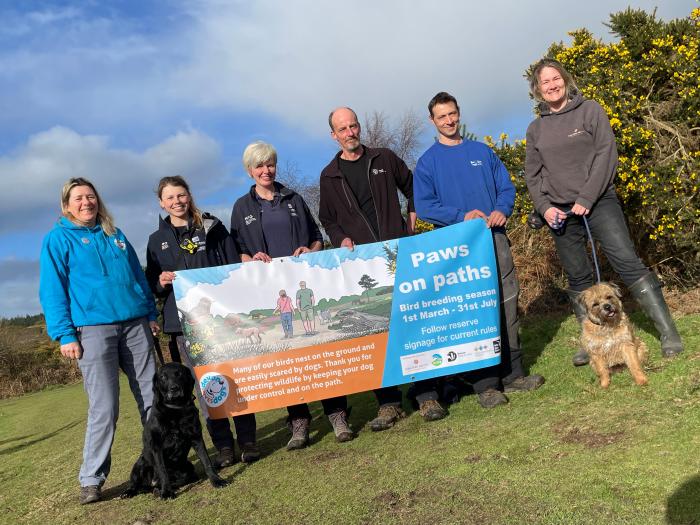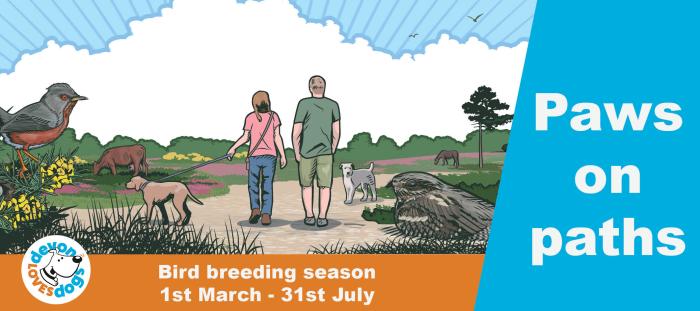
As the peak season for bird nesting arrives, it’s crucial for us all to play our part in helping East Devon’s wild birds raise their young and thrive.
From 1 March until 31 July, birds take advantage of warmer weather, availability of food and nesting materials to start breeding, making it essential to give them the undisturbed space they need.
On the East Devon Pebblebed Heaths, many birds nest on the ground or in low bushes, which can make them more vulnerable. People and dogs should avoid walking through areas of gorse, heather and other low growing vegetation, because you can easily scare birds or harm birds’ nests. If repeatedly disturbed, adult birds cannot incubate their eggs or feed their young and nests can be abandoned leaving eggs or chicks exposed to the cold and predators.
The Pebblebed Heaths Conservation Trust, RSPB and Devon Wildlife Trust manage various areas across the Pebblebed Heaths. This has prompted the installation of new banner signs across the Pebblebed Heaths to provide relevant information for each area.
Cllr Geoff Jung, from South East Devon Habitats Regulation Executive Committee and East Devon District Council’s Portfolio Holder for Coast, Countryside and Environment said:
“We are working with land managers across the Pebblebed Heaths to protect wildlife and ensure their survival. As our population continues to grow and more people explore the countryside, it’s vital to share these spaces respectfully with the wildlife that make it their home.
“The Heaths provide a variety of landscapes and terrain for everyone to explore, whether on foot, bike or horseback. We urge all visitors to look out for new banner signs around the Heaths, providing area-specific advice.”
Kim Strawbridge from Pebblebed Heaths Conservation Trust said: “The whole of the Pebblebed Heaths is an internationally important nature reserve, as well as a much-loved recreational space. We can all play a part in helping the wildlife that lives in the reserve to thrive by keeping to the paths so that the vegetation is a safe refuge for our birds and other wildlife to breed and raise the next generation. With over 80km of paths and tracks crisscrossing the reserve, it is easy to make the most of this beautiful place without ever having to step off the path. We are asking dog walkers to keep ‘Paws on the Paths’ as this simple action really does make a huge difference in safeguarding our wildlife populations.”
Toby Taylor from RSPB said: “We ask visitors to keep their dogs on a lead on the areas that we manage, to allow birds to nest and successfully breed on the open heath. This is because of rare and special species such as Nightjar and Dartford Warbler which depend on heathland to breed. We have livestock grazing all year round, so please stay a safe distance from the cattle and ponies making sure dogs don’t chase them.”
Edric Hopkinson from Devon Wildlife Trust said: “As we look forward to the arrival of spring and the welcome return of migratory ground nesting birds such as Nightjar, as well as the resident bird populations of the Pebblebed Heaths, we ask visitors to keep their dogs on a lead when visiting Devon Wildlife Trust managed Nature Reserves. The Pebblebed Heaths is an internationally important area for nature conservation and the disturbance of breeding wildlife can have a significant impact on breeding success. Signs across the heaths remind visitors to help us protect this valuable landscape and your cooperation can help us put nature into recovery.”

